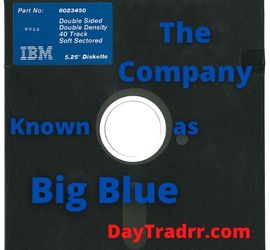What Is the Posted Date?
 For credit and debit cards, the posted date is the specific day, month, and year on which a card issuer posts a transaction and adds it to the account balance of the cardholder. For a bank, it is the day on which money is taken out of or deposited into a bank account. The posted date, also known as the settlement date, can be the same day as the transaction date.
For credit and debit cards, the posted date is the specific day, month, and year on which a card issuer posts a transaction and adds it to the account balance of the cardholder. For a bank, it is the day on which money is taken out of or deposited into a bank account. The posted date, also known as the settlement date, can be the same day as the transaction date.
However, in practice, the post date is usually one to three days later. The float is the time between the transaction date and the post date. Electronic payments frequently include contact with many parties. As a result, this might delay the posting of a transaction. Banks have procedures in place to assist account holders in managing their account balances between the time when a transaction occurs and when it is posted or settled.
The issuing bank will normally place funds on hold once a transaction has been approved. This will reduce the available credit balance by the purchase amount for a credit card transaction. The account holder’s available funds will be reduced as a result of a debit card transaction. The account holder will often see the transaction displayed as a “pending transaction” for both debit and credit card accounts. The post date will be used by most issuing banks as the last date on an account holder’s monthly statement.
Posted Date vs Transaction Date
The transaction date is the date when the transaction took place. The posting date indicates the time when the transaction was entered into the card issuer’s system.
Posted Date
The Posted Date is the date or fiscal period to which the transaction posts to General Ledger. The date on which the transaction is posted does not affect when the activity actually occurred. For credit cards, the post date is the day when funds are added or subtracted from a credit card account balance. Also known as the settlement date, the post date can be the same day as the transaction date or one to three days later.
Transaction Date
The Transaction Date is also referred to as the Document Date. It is the date the transaction was created. The Transaction Date is normally either the original invoice date or the date the transaction was recorded in the database. The document date will be the date listed on the invoice. It is the date used for aging purposes and used to calculate the due date and the date used for calculating discounts.
Credit card transaction date – On a statement or app, a transaction date is when the credit card transaction took place. The posting date, or the date the transaction actually posts to a credit card statement, may be different. Either way, a “transaction” is any activity that has occurred on a credit card statement, such as:
- Purchases
- Credit card payments
- Credits to your account
- Balance transfers
- Cash advances
Often, transaction dates are listed in chronological order on a monthly statement. They may also be listed by user or transaction type.
Posted Date – Why It Matters
The posted date can be especially important for credit card accounts. It is worthwhile to understand the impact of the post date.
- Interest charges – The post date on a credit card account can affect the interest charged in a particular statement period. As a result, consumers pay less in the interest the earlier payment is posted.
- Credit limit – If a cardholder is on the verge of exceeding their credit limit, the posting date is crucial. It pays to keep an eye on the charges that haven’t yet been posted to ensure that future transactions aren’t denied. Also, customers want to monitor this to ensure they won’t be charged penalties if they exceed their credit limit.
- Late payment fees – It’s also crucial to understand when a credit card payment is posted before the card’s monthly due date. This is to prevent late payment fees. The credit card company will usually notify the user when the payment will be posted to their account. The posted date is significant since it impacts whether or not a payment is considered timely by the credit card company. Each credit card company has its own set of regulations for when payments are posted based on when they are received.
For example, online payments to Discover Financial Services that are submitted after 5:00 p.m. ET will not post until the next business day for Non-Discover It Card Members. For Discover It Card Members, payments submitted before midnight Eastern Time (ET) will be credited to your account that day, except for payments made on the cycle date. Payments made on your cycle date submitted before 5:00 p.m. ET will be credited as of that same day. (Source: discover.com)
Up Next: IBM – The Company Known as Big Blue
 IBM (International Business Machines) is the company known as Big Blue. The nickname Big Blue has been used since the 1980s. The name may have come from the deep blue color of the company’s logo or the blue tint of its early computer displays. Big Blue became a moniker for IBM in the popular and financial press in the early 1980s. The origins of the name are unknown. However, it is widely considered to relate to the blue color of the machines’ casings. Whatever the origin, the moniker was affectionately embraced by IBM. In fact, the company has named several high-profile projects and initiatives after it.
IBM (International Business Machines) is the company known as Big Blue. The nickname Big Blue has been used since the 1980s. The name may have come from the deep blue color of the company’s logo or the blue tint of its early computer displays. Big Blue became a moniker for IBM in the popular and financial press in the early 1980s. The origins of the name are unknown. However, it is widely considered to relate to the blue color of the machines’ casings. Whatever the origin, the moniker was affectionately embraced by IBM. In fact, the company has named several high-profile projects and initiatives after it.
In a notorious 1997 chess tournament, IBM’s chess-playing computer, Deep Blue, challenged and finally defeated grandmaster Garry Kasparov. An unnamed IBM enthusiast is credited with the first known published reference to the Big Blue nickname, which appeared in the June 8, 1981, edition of Businessweek magazine. Other speculators have linked IBM’s Big Blue moniker to the company’s logo and old dress code. Another speculation has to do with the company’s long history with blue-chip stocks.




